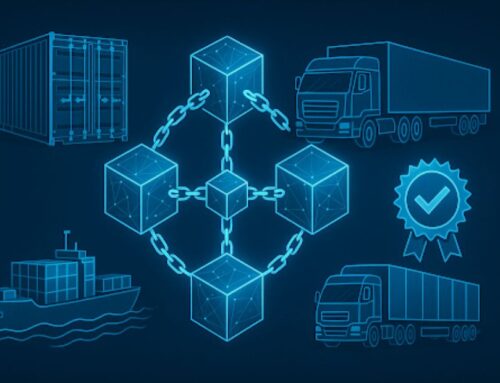Managing risk in logistics is essential for ensuring the smooth operation of supply chains. The complexity of logistics operations, which often involve multiple stakeholders, global networks, and unpredictable variables, makes risk management a critical component of any successful logistics strategy. This article will explore effective strategies for managing risk in logistics, providing practical insights for companies seeking to safeguard their operations and ensure long-term success.
Understanding the Importance of Risk Management in Logistics
Risk management in logistics is about identifying potential risks, assessing their impact, and implementing strategies to mitigate them. Logistics operations are fraught with risks, including natural disasters, transportation disruptions, regulatory changes, and supplier failures. Effective risk management helps companies anticipate these challenges and develop contingency plans to address them, minimizing disruptions and maintaining continuity in their operations.
One key aspect of risk management is understanding the interconnected nature of logistics networks. A disruption in one part of the supply chain can have a ripple effect, impacting the entire network. Therefore, a holistic approach to risk management that considers the entire supply chain is essential. This approach helps in identifying risks and in implementing solutions that address potential vulnerabilities across the board.
Identifying and Assessing Risks
The first step in effective risk management is identifying potential risks. This involves conducting a thorough analysis of the logistics network, including transportation routes, suppliers, and regulatory environments. Companies can use various tools, such as risk matrices and scenario analysis, to assess the likelihood and impact of different risks. These tools help prioritize risks based on their potential to disrupt operations.
For example, a company might identify the risk of transportation delays due to weather conditions or regulatory changes at international borders. By assessing the likelihood of these events and their impact on the supply chain, the company can prioritize its risk management efforts accordingly. Regular risk assessments are crucial for staying ahead of potential threats and ensuring that the company is prepared to respond to them effectively.
Developing Contingency Plans
Once risks have been identified and assessed, the next step is to develop contingency plans. These plans outline the steps the company will take in the event of a risk materializing. Contingency plans should be specific, actionable, and regularly updated to reflect changes in the logistics environment. They should also include clear communication protocols to ensure that all stakeholders are informed and prepared to act.
For instance, if a supplier fails to deliver goods on time due to unforeseen circumstances, the company should have a contingency plan in place that includes alternative suppliers, rerouting of shipments, or adjustments to production schedules. By having these plans in place, companies can quickly adapt to disruptions and minimize their impact on operations.
Leveraging Technology for Risk Management
Technology plays a crucial role in modern risk management strategies. Advanced technologies, such as real-time tracking systems, predictive analytics, and automation, enable companies to monitor their logistics networks more effectively and respond to risks in real time. These technologies provide valuable data that can be used to identify trends, predict potential disruptions, and optimize logistics processes.
For example, predictive analytics can help companies forecast demand more accurately, reducing the risk of overstocking or stockouts. Real-time tracking systems allow companies to monitor the location and condition of goods throughout the supply chain, enabling them to respond quickly to any issues that arise. Automation can also help streamline processes, reducing the likelihood of human error and improving overall efficiency.
Building Strong Relationships with Suppliers and Partners
Strong relationships with suppliers and logistics partners are essential for effective risk management. By working closely with suppliers and partners, companies can ensure that they are aligned on expectations, quality standards, and contingency plans. Open communication and collaboration are key to addressing risks and finding solutions that benefit all parties involved.
For example, companies can collaborate with suppliers to develop joint risk management strategies, such as diversifying sourcing options or implementing quality control measures. By building trust and fostering long-term relationships, companies can create a more resilient supply chain that is better equipped to handle disruptions.
Diversifying Supply Chains
Diversification is a powerful strategy for managing risk in logistics. By diversifying suppliers, transportation routes, and logistics partners, companies can reduce their reliance on any single entity and minimize the impact of disruptions. Diversification also provides companies with more flexibility, allowing them to quickly shift resources and adapt to changing circumstances.
For instance, a company that sources materials from multiple suppliers across different regions is less likely to experience a total supply chain disruption if one supplier faces difficulties. Similarly, using multiple transportation modes or routes can help mitigate the impact of delays or closures on a particular route. Diversification should be a key consideration in any risk management strategy, providing companies with the agility needed to navigate a dynamic logistics environment.
Continuous Monitoring and Improvement
Risk management is not a one-time effort but an ongoing process that requires continuous monitoring and improvement. Companies should regularly review their risk management strategies, assess their effectiveness, and make adjustments as needed. This includes staying informed about changes in the logistics environment, such as new regulations, technological advancements, and market trends.
Continuous improvement also involves learning from past experiences. After a disruption has occurred, companies should conduct a thorough analysis to identify what went wrong and how it can be prevented in the future. This feedback loop is essential for refining risk management strategies and building a more resilient logistics network.
In Conclusion
Effective risk management is essential for the success of logistics operations. By identifying and assessing risks, developing contingency plans, leveraging technology, building strong relationships, diversifying supply chains, and continuously monitoring and improving their strategies, companies can minimize the impact of disruptions and ensure the smooth flow of goods and services. In a world where logistics networks are becoming increasingly complex and interconnected, a proactive approach to risk management is more important than ever. By adopting these strategies, companies can protect their operations and gain a competitive edge in the market.









